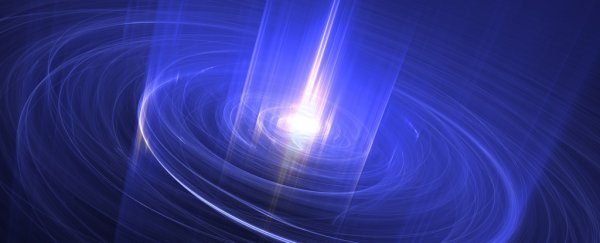It's one of the strangest stars in the known Universe, but new observations of the stellar oddity called Przybylski's star reveal this unusual orb is even weirder than we realised.
Przybylski's star (aka HD 101065) was first discovered back in the 1960s, and ever since then astronomers have been fascinated by its unique chemical makeup, which is suspected to include ultra-rare elements that verge on the almost impossible.
But that's not the only strange secret Przybylski's star has been keeping.
A new analysis led by researchers from the Leibniz Institute for Astrophysics Potsdam in Germany has discovered that HD 101065 isn't just composed of bizarre stuff – it also exhibits bizarre movement.
Using a tool called the High Accuracy Radial Velocity Planet Searcher on the ESO's 3.6-metre telescope in Chile, the team took readings of HD 101065's magnetic field, discovering the star's rotation period – the time it takes to complete one revolution on its axis – stretches out over almost two centuries.
"Our analysis of newly acquired and historic longitudinal magnetic field measurements indicates that Przybylski's star is also unusual with respect to its extremely slow rotation," the researchers write in their paper, in which they estimate the strange star's rotation period takes place over a whopping 188 years.
That's a pretty long time for a star to do a 360, although it could be par for the course for what are called Ap stars – a chemically interesting category of stars that are known to rotate slowly, with estimates ranging up to 1,000 years.
What makes these stars chemically peculiar is the range of elements astronomers can detect when they analyse their stellar spectrums – the chemical signatures embodied in the electromagnetic radiation each star gives off.
In the case of Przybylski's star – which is both like and unlike other Ap stars – we see unusually low amounts of iron and nickel, together with unusually high amounts of rare, heavy elements, including strontium, caesium, and neodymium, among many others.
"Its spectrum is extremely peculiar. Everyone who's seen it says it's the strangest stellar spectrum they've ever seen," astronomer Jason Wright from Penn State University, who wasn't involved with the new research, explained to Discover last year.
"Some people say there are so many [chemical indicator] lines you really can't tell what you're looking at."
Wright knows a thing or two about weird stars. He's the guy who popularised the notion of the 'alien megastructure' around another stellar oddity – KIC 8462852, aka Tabby's Star – whose strange dimming had scientists back in 2015.
That hypothetical megastructure is somewhat out of favour now, although Tabby's Star remains a decidedly mysterious entity.
But Przybylski's star could be even weirder.
In addition to its overabundance of rare elements, Przybylski's star – which Wright calls his "favourite astrophysical enigma" – is also the only star known to contain ultra-rare elements called actinides.
These elements, which hang on the fringes of the periodic table occupied by atomic numbers 89 through 103, appear to exist within Przybylski's star as short-lived radioactive isotopes – which doesn't make a lot of sense, since their short half-life means they should have long ago decayed.
One possibility as to how they could still be there is they are themselves the decayed forms of unseen ultra-heavy elements that haven't even been discovered by scientists yet.
"[This view] takes short-lived actinides being in there from being impossible to not totally impossible," says Wright.
For now, nobody knows if this hypothesis is right – and the discovery of HD 101065's glacial rotation doesn't get us a whole lot closer to an answer.
But it's clear there's still a lot we can learn about Przybylski's star, and who knows how many weird secrets it still has left to discover.
The findings are reported in the Monthly Notices of the Royal Astronomical Society.
